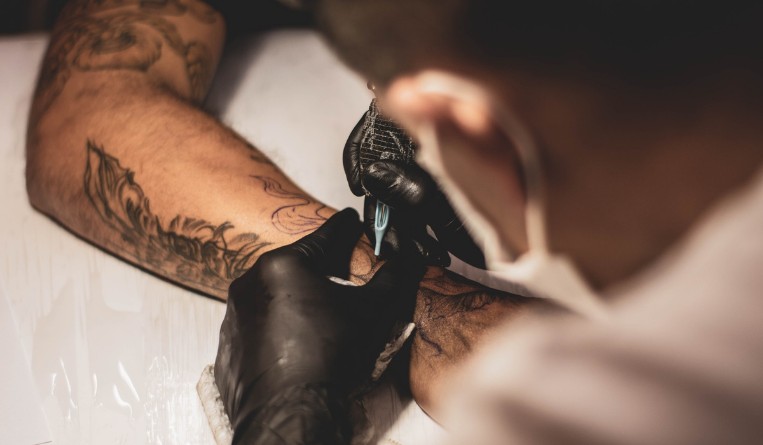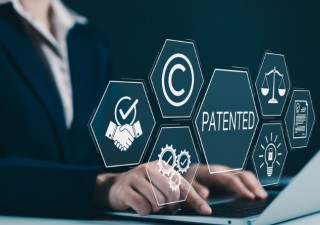Whang-Od, Nas Daily, and Sharing Cultural Knowledge Through ELearning
18 August 2021

After a relative of 104-year-old Filipino tattooist Apo Whang-od Oggay, or better known as Whang-od, labeled it a fraud, YouTuber Nas Daily removed his online course from a digital learning site. The now-discontinued course, which cost P750, consisted of Whang-Od's journey, her methods in traditional Kalinga tattoo making, and the cultural aspect of her medium.
According to Arjel P. de Guzman, Founding Director, OPTMARKS, traditional knowledge and traditional cultural expressions are, in their own right, so much different from the usual subject of intellectual property law.
"I must say, traditional knowledge and cultural expressions even transcend intellectual property (IP) which is why states have even made it a point to institutionalize the protection thereof by coming up with specific legislation defining and protecting traditional knowledge and cultural expressions," he says. "Laws that seek to protect traditional knowledge and cultural expression must always be considered by anyone looking to share or commercialize them because oftentimes, these laws supersede IP laws and principles. "
He adds that while IP can be an alternative tool to protect traditional knowledge and cultural expressions, the protection can be very limited and individualized as opposed to what most indigenous cultural communities aim which is collective protection.
"Thus in dealing with traditional knowledge and cultural expressions, one must not look at IP per se, but on each and every characteristic of the culture and community concerned, their customs, and how the community itself and the state protect them," he says.
Protecting The Rights of Indigenous People
Certain laws aimed to protect indigenous people, their community, and cultural expression supersede general IP principles.
According to De Guzman, indigenous, traditional knowledge and cultural expressions are very much polarized from the traditional subjects of IP.

"For one, IP is geared towards the individual protection of innovation and creativity and is designed to foster commercialization and trade," he says. "In contrast, traditional knowledge and cultural expressions are communal in nature.
Indigenous and traditional communities assert the collective ownership and protection of their time-old cultural products and traditions. With that assertion in place, most arguments raise the point that IP may be inadequate, if not conflicting, to protect indigenous communities and their products. Also, indigenous communities’ rights have their own distinct and unique characteristics which oftentimes extend beyond what is recognized as protectable under the present IP regime of protection.
Take for example the most common argument in terms of copyright. Copyright protection generally extends only up to fifty years after the author’s demise. That term of protection is viewed as grossly inadequate if one aims to protect traditional knowledge which, in its nature, is preserved and continuously handed down from one generation to another. Also, in terms of subject matter, certain subjects may be considered as part of the public domain and hence, not subject to protection under general principles of IP. Again, these would foreclose the possibility of protecting products, expressions, and methods that do not satisfy the requirement of IP protection like a patent, design, or utility model but which, must be protected as traditional knowledge and cultural expressions under special laws. Under this sphere, for example, the ancient tradition of “pambabatok” which is practiced by Whang-od and her tribe, would not be protected as a patentable process for being obvious and lacking in novelty. This gap is being addressed by the Indigenous People's Rights Act (IPRA) which protects even cultural manifestations."
De Guzman says that aside from legislation, governments must continue to identify indigenous cultural communities and work hand in hand with them in defining and protecting traditional knowledge and cultural expressions.
"These are the most basic and obvious problems which hound indigenous and traditional knowledge and culture," he says.
"Societies have been long-stranded on the problem of defining which are “indigenous”, “traditional”, “cultural”, or even “local” knowledge. Working with different indigenous and cultural communities would somehow create a harmonized avenue within which the discussion on the more complex issue about traditional knowledge and cultural expression may be discussed."
He adds, "I would like to think that the limitation or challenge is not on the law itself but more on the education and dissemination of information regarding indigenous communities, their culture, customs, and tradition. The problem lies not only with the legal aspect but more on understanding different indigenous communities. Issues surrounding these communities often involve overlapping considerations of ethical, cultural, historical, religious, and even moral dimensions.
The rights, culture, and property of indigenous people are being exploited in diverse ways and with the advent of technology which all the more makes exploitation easy, indigenous communities are more threatened than before. The public, in general, must be educated and made aware that these indigenous communities, their rights, and traditions, must always be recognized and protected."
Excel V. Dyquiangco






